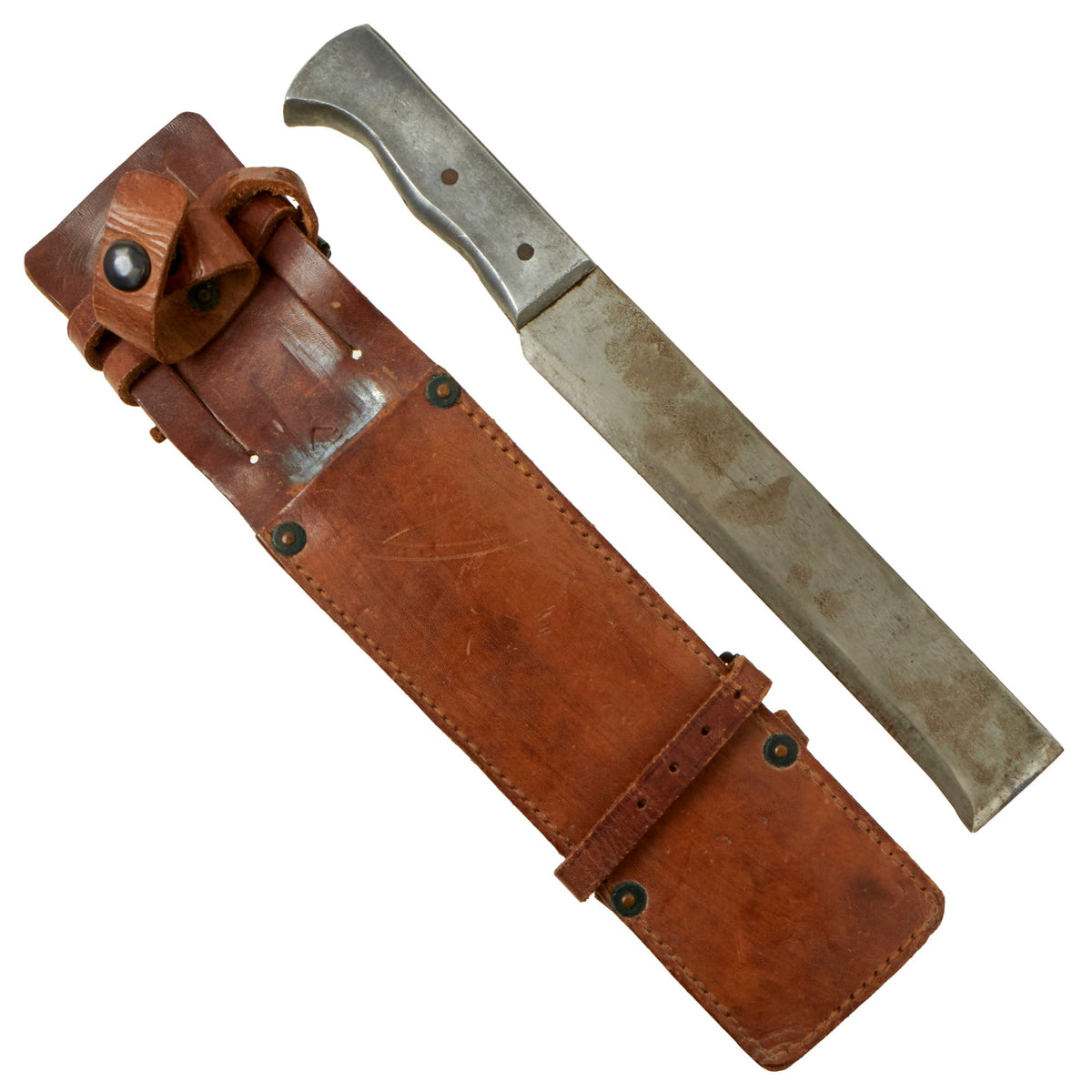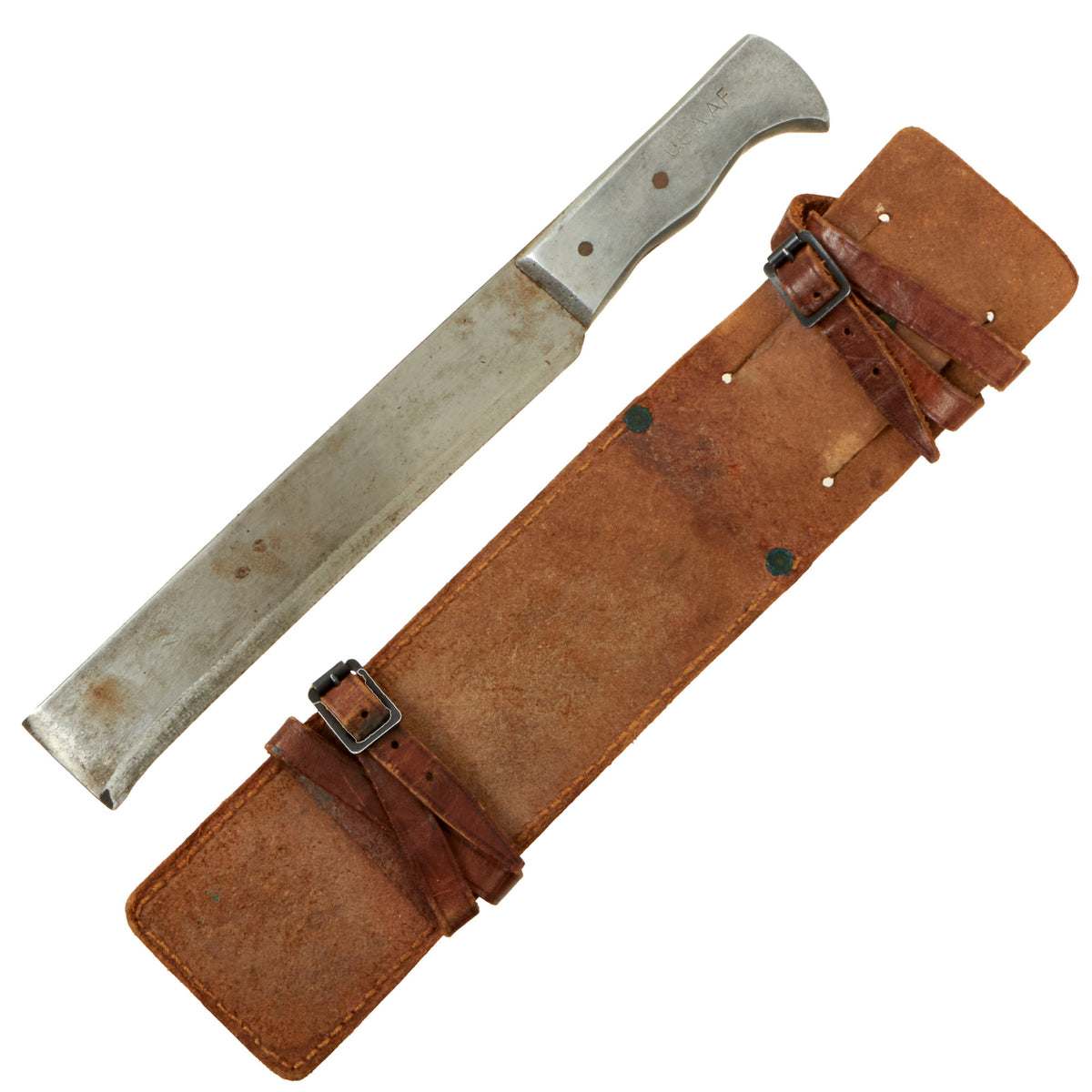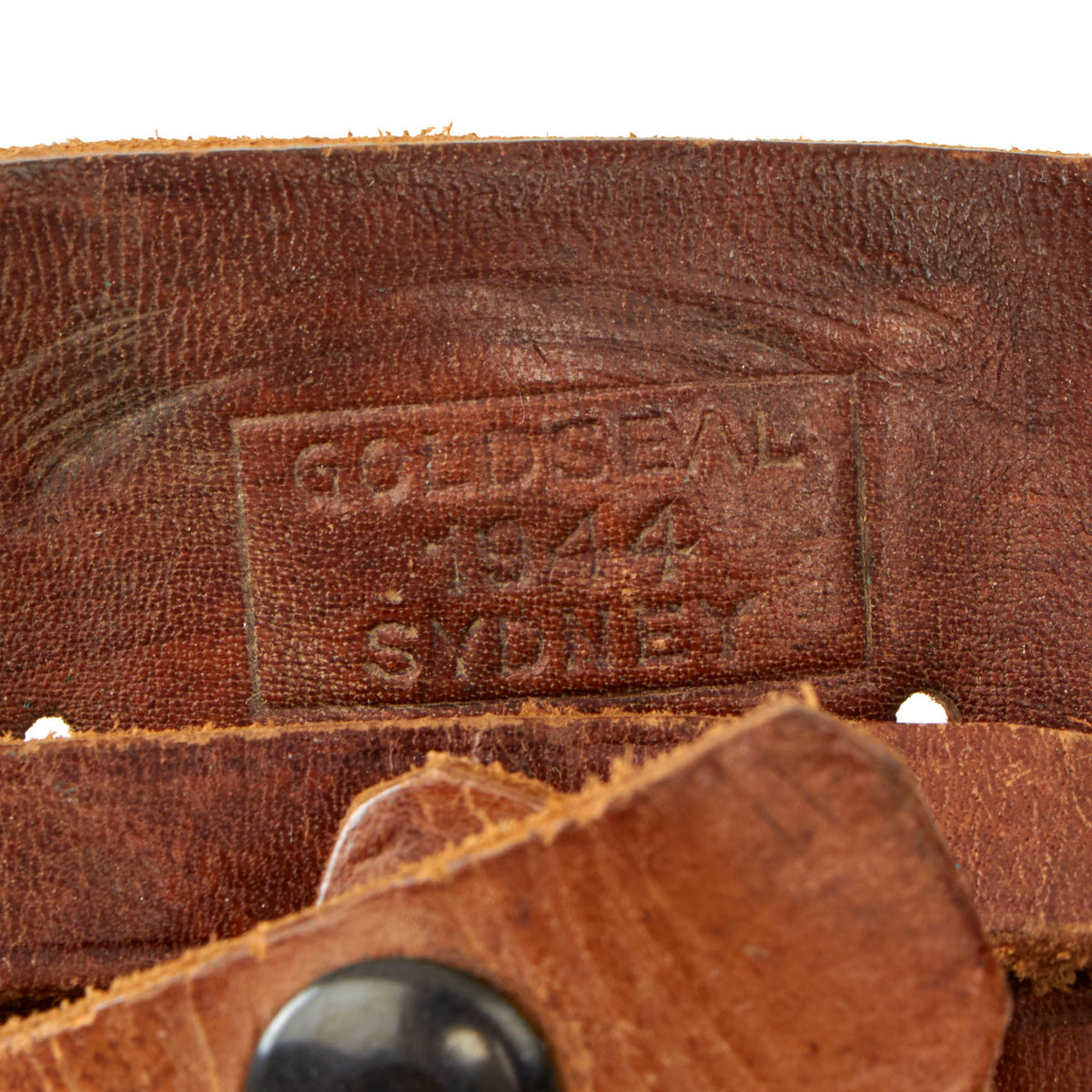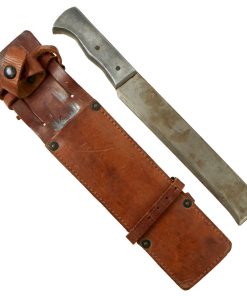Original Australian WWII Service Worn Royal Australian Air Force Pilot Survival Machete with Scabbard – Handle Marked For U.S. Army Air Force Original Items
$ 495,00 $ 148,50
Original Item: Only One Available. The Royal Australian Air Force (RAAF) traces its history back to the Imperial Conference held in London in 1911, where it was decided aviation should be developed within the Armed Forces of the British Empire. Australia implemented this decision, the only country to do so, by approving the establishment of the Central Flying School (CFS) in 1912. The location for the proposed school was initially to be at Duntroon, Australian Capital Territory, but in July 1913 Point Cook, Victoria, was announced as the preferred location. The first flights by CFS aircraft took place there in March 1914.
The Australian Flying Corps (AFC) was formed as a Militia unit, with staff and students to be selected from the Citizen Forces. After an abortive deployment to German New Guinea at the end of 1914 as part of the Australian Naval and Military Expeditionary Force, it earned a most credible reputation in both Palestine and France during World War I as a part of the Australian Imperial Force (AIF). The Australian Flying Corps remained part of the Australian Army until 1919, when it was disbanded along with the AIF. Although the Central Flying School continued to operate at Point Cook, military flying virtually ceased until 1920, when the Australian Air Corps was formed. The Australian Air Force was formed on 31 March 1921. King George V approved the prefix “Royal” in June 1921 and it became effective on 31 August 1921. The RAAF then became the second Royal air arm to be formed in the British Commonwealth, following the British Royal Air Force.
The service was rapidly expanded during World War II and at its height, it was the fourth largest air force in the world, consisting of 53 squadrons based in the Pacific and a further 17 in Europe.
Like many other nations, the RAAF wasn’t any different when it came to pilot survival equipment such as jungle kits, knives and machetes. This example would have been apart of a survival kit or issued by itself. The machete has an almost billhook type tip and is not pointed like most knives and machetes.
The knife measures 12” overall with a 7 ¼” blade. The handle measures 4 1/2” and features an aluminum grip secured by brass rivets. This example is marked on the handle with U.S.A.A.F. and was more than likely was received in a transaction between pilots, and the blade definitely shows period service wear and pitting oxidation, which most likely obliterated any markings if they were there. The handle is still solidly attached.
The leather scabbard is in good service used condition, now faded to a dark brown color from exposure and time. The leather tie straps on the top and bottom are still present, however the leather is delicate and cracked. The securing strap is present as well, with a functional snap. The top of the belt loop tongue is stamped with GOLDSEAL 1944 SYDNEY.
This is truly an attractive piece and is welcomed into any WWII Australian RAAF and USAAF collections.
Dimensions:
Blade length: 7 1/4”
Blade style: Rectangular Machete with Pointed Tip
Overall length: 12”
Scabbard length: 7″ with belt loop
Fast Shipping with Professional Packaging
Thanks to our longstanding association with UPS FedEx DHL, and other major international carriers, we are able to provide a range of shipping options. Our warehouse staff is expertly trained and will wrap your products according to our exact and precise specifications. Prior to shipping, your goods will be thoroughly examined and securely secured. We ship to thousands clients each day across multiple countries. This shows how we're dedicated to be the largest retailer on the internet. Warehouses and distribution centres can be located throughout Europe as well as the USA.
Note: Orders with more than one item will be assigned a processing date depending on the item.
Before shipping before shipping, we'll conduct a thorough inspection of the items you have ordered. Today, the majority of orders will be delivered within 48 hours. The delivery time will be between 3-7 days.
Returns
The stock is dynamic and we cannot completely manage it because multiple stakeholders are involved, including our factory and warehouse. So the actual stock may alter at any time. It's possible that you may not receive your order once the order has been made.
Our policy is valid for a period of 30 days. If you don't receive the product within 30 days, we are not able to issue a refund or an exchange.
You can only return an item if it is unused and in the same state as the day you received it. You must have the item in its original packaging.
Related products
Uncategorized
Uncategorized
Uncategorized
Uncategorized
Uncategorized
Uncategorized
Uncategorized
Uncategorized
Angolan Rebel 1970s era 60mm Inert Display Mortar from Angolan Civil War Original Items
Uncategorized
Uncategorized
Australian WWII Owen MK1 Machine Carbine SMG Custom Fabricated Replica with Sling Original Items
Uncategorized
Uncategorized
Uncategorized
Uncategorized
Uncategorized
Armored Burgonet Helmet & Polearm from Scottish Castle Leith Hall Circa 1700 Original Items
Uncategorized
Uncategorized













































































